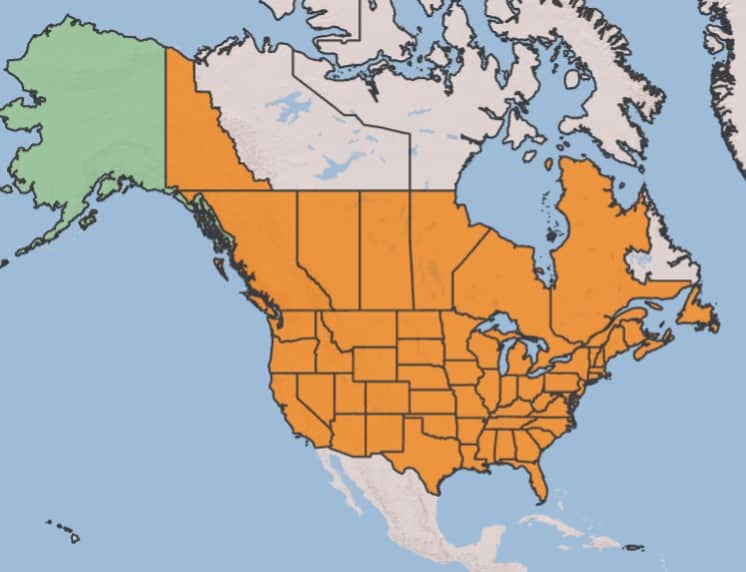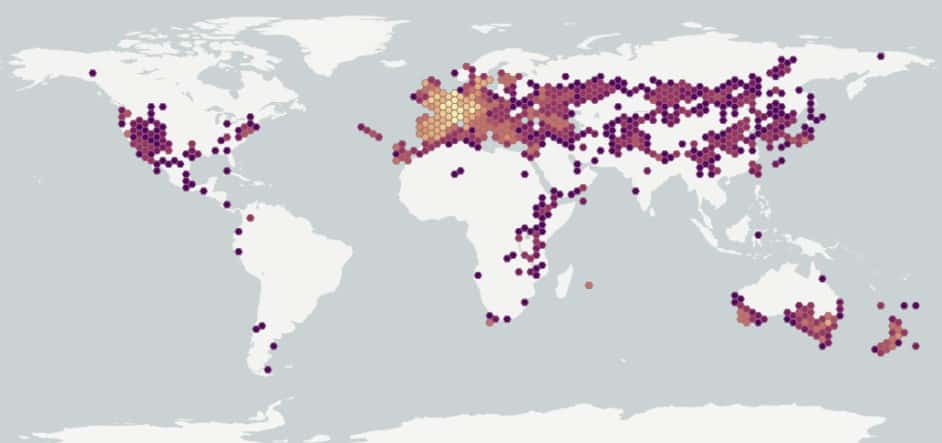Orobanche and Phelipanche
Explore More :
Explore plus :
Overview
Aperçu
Regulation :
Remarques Réglementation:
- Quarantine lists of countries e.g. China *may be updated without notice
- Quarantine lists of countries e.g. Mexico *may be updated without notice
Regulation Notes:
On quarantine lists of countries e.g. China, Mexico, United States*.
*Quarantine lists of countries may be updated without notice.
Distribution :
Répartition :
Orobanche and Phelipanche contain approximately 150 species that are mostly native to the Mediterranean region and western Asia, with a small number (10) distributed worldwide as agricultural pests (Parker and Riches 1993; Schneeweiss 2013).
Habitat and Crop Association :
Habitat et Cultures Associées :
Broomrapes occupy a variety of habitats in the warmer regions of the temperate zone; they are particularly found in disturbed habitats associated with crops or colonizing species, and open, sunny habitats (Musselman 1980).
Economic Use, cultivation area, and Weed Association :
Utilisation économique, zone de culture et association de mauvaises herbes :
Duration of Life Cycle :
Durée du cycle vital:
Annual or Perennial
Dispersal Unit Type :
Type d’unité de dispersion :
Seed
General Information
RENSEIGNEMENTS GÉNÉRAUX
Broomrapes are obligate root parasites that do not produce chlorophyll and require hosts to survive. Many species are generalists, attacking a wide range of hosts from different plant families, while others are specialists and have a narrow host range. The economically important species can be particularly harmful in vegetables and legumes. They do not usually attack cereals (Parker and Riches 1993; Holm et al. 1997).
Recent phylogenetic studies propose reclassification of all six species found in Canada into a new genus, Aphyllon (Schneider 2016), in which case no Orobanche species would remain in Canada.
.Identification
Identification
-
Seed
Size
- Broomrape seed length: 0.2 – 0.5 mm; width: 0.1 – 0.3 mm
- Broomrape seeds are dust-like seeds, one of the smallest seeds among vascular plants
Shape
- Seed of broomrape is oval, oblong, teardrop or wedge-shaped; edges may be curved or angled
Surface Texture
- Seed surface is reticulated with large, concave interspaces and significantly raised ridges
Colour
- Broomrape seeds are light or dark brown coloured; seeds are translucent, and generally glossy
Other Features
- Seeds of broomrape appear as flecks of dust or soil; they are difficult to compare to commonly encountered seeds of a comparable size
- The hilum is not visible
Identification Tips
CONSEILS POUR L’IDENTIFICATION
Additional Botany Information
AUTRES RENSEIGNEMENTS BOTANIQUES
Similar Species
ESPÈCES SEMBLABLES
Similar species are based on a study of seed morphology of various species, and those with similar dispersal units are identified. The study is limited by physical specimen and literature availability at the time of examination, and possibly impacted by the subjectivity of the authors based on their knowledge and experience. Providing similar species information for seed identification is to make users aware of similarities that could possibly result in misidentification.
Broomrape seeds have a combination of features that distinguishes them in the Orobanchaceae:
- Small size (maximum length: 0.5 mm)
- Reticulate surface with large interspaces
- Translucent seed
Striga spp. (witchweed)
Witchweed seeds are a similar size, oval shape, brown colour and translucent surface as broomrape seeds.
Witchweed seed surface is covered in twisted, longitudinally linear ridges, the seeds are yellow to light brown and the seed is opaque. These features require high magnification to observe.
Click to select species
Cliquez pour sélectionner les espèces
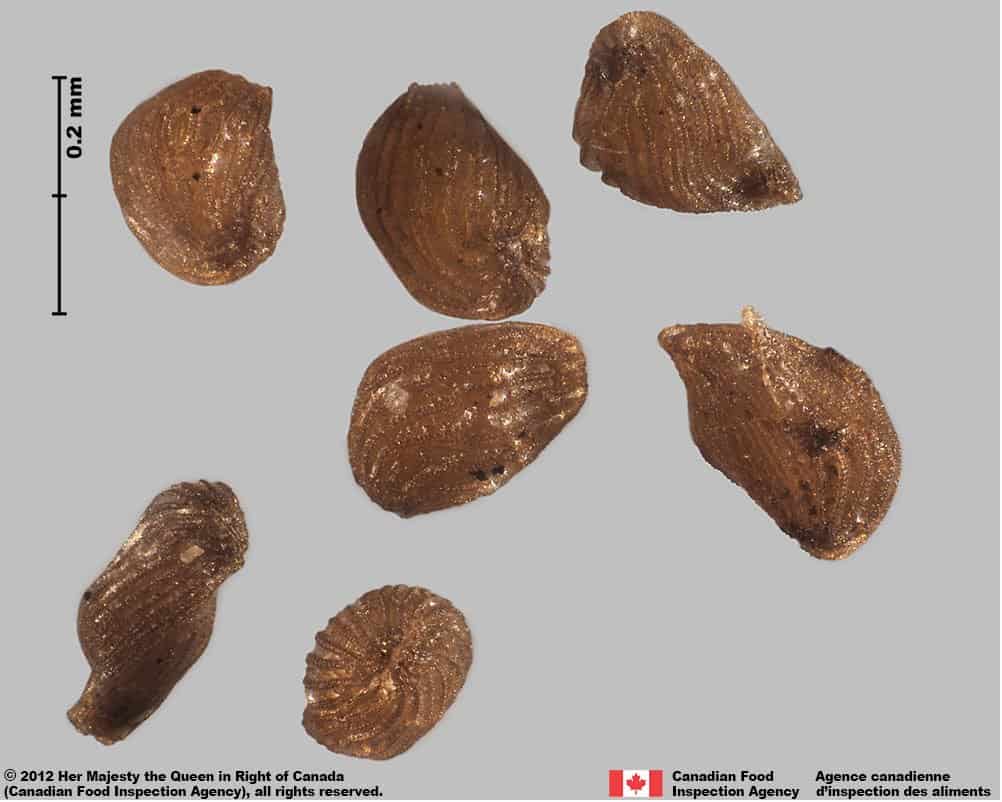
Striga asiatica
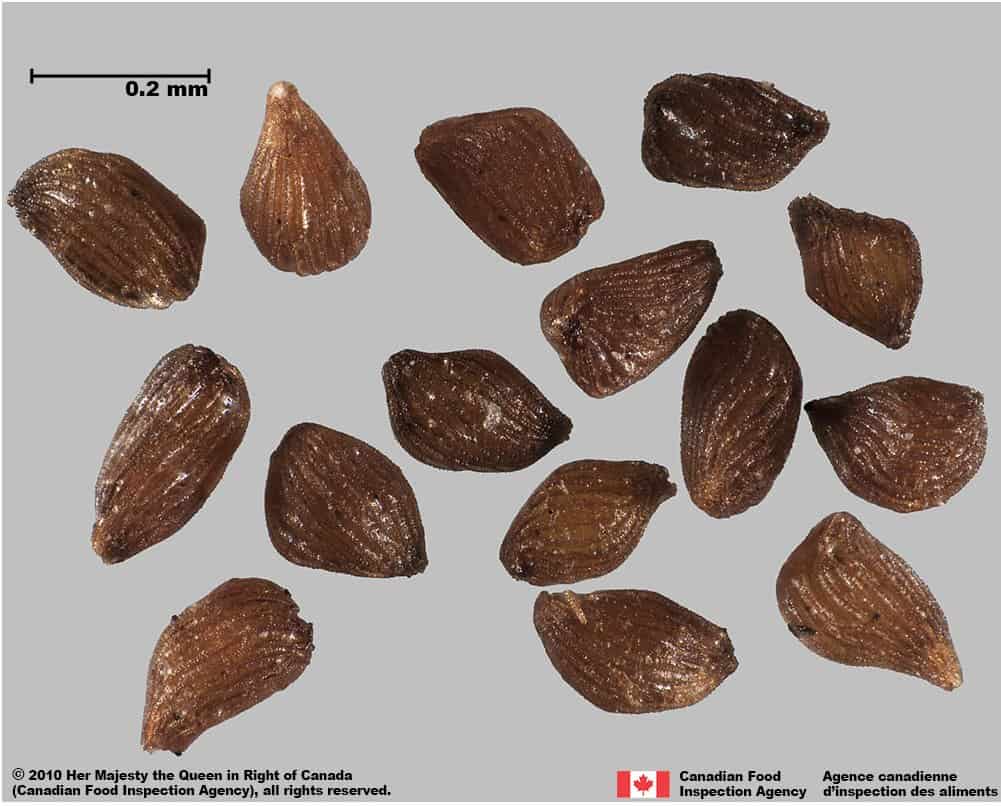
Striga spp.
Comparison Window
Fenêtre de comparaison
MAIN SPECIES
ESPÈCES PRINCIPALES
Orobanche and Phelipanche
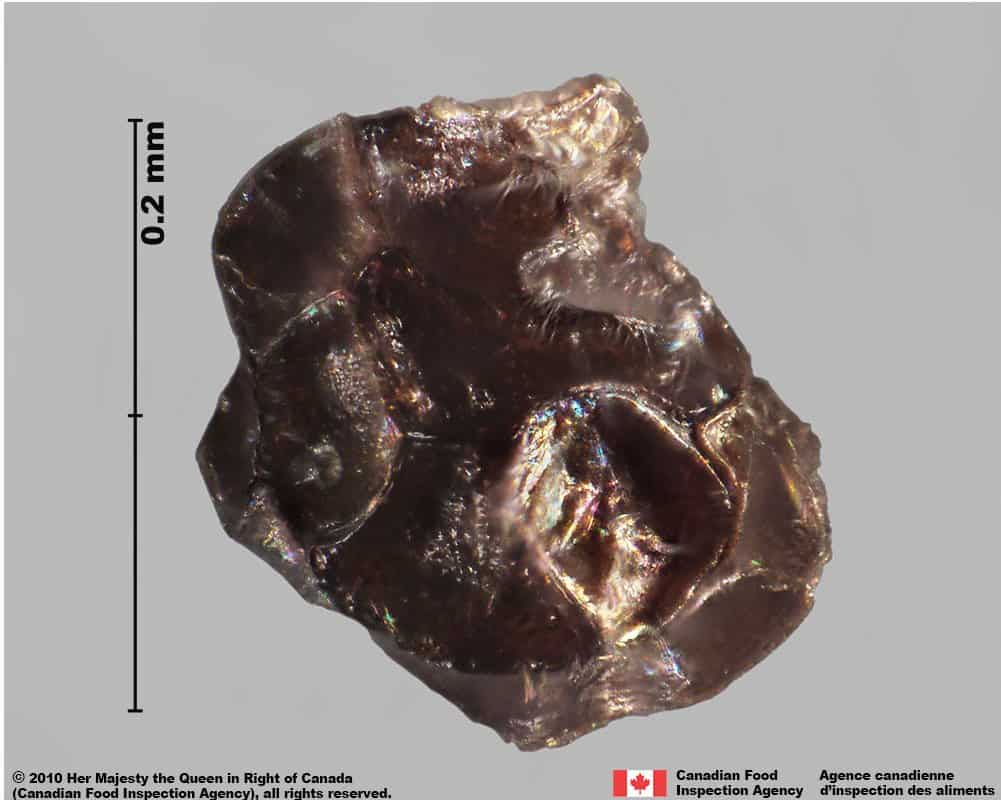
Orobanche and Phelipanche
Orobanchaceae
Orobanche hederae seed
MAIN SPECIES
ESPÈCES PRINCIPALES
Orobanche and Phelipanche
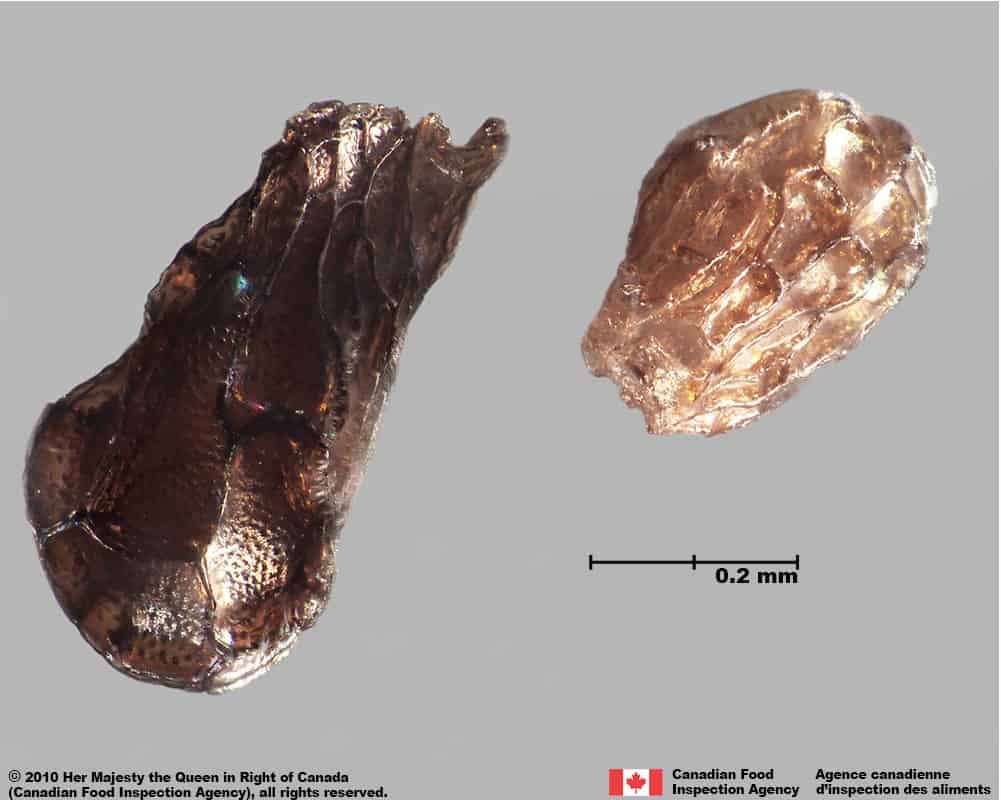
Orobanche and Phelipanche
Orobanchaceae
Orobanche hederae seeds
MAIN SPECIES
ESPÈCES PRINCIPALES
Orobanche and Phelipanche
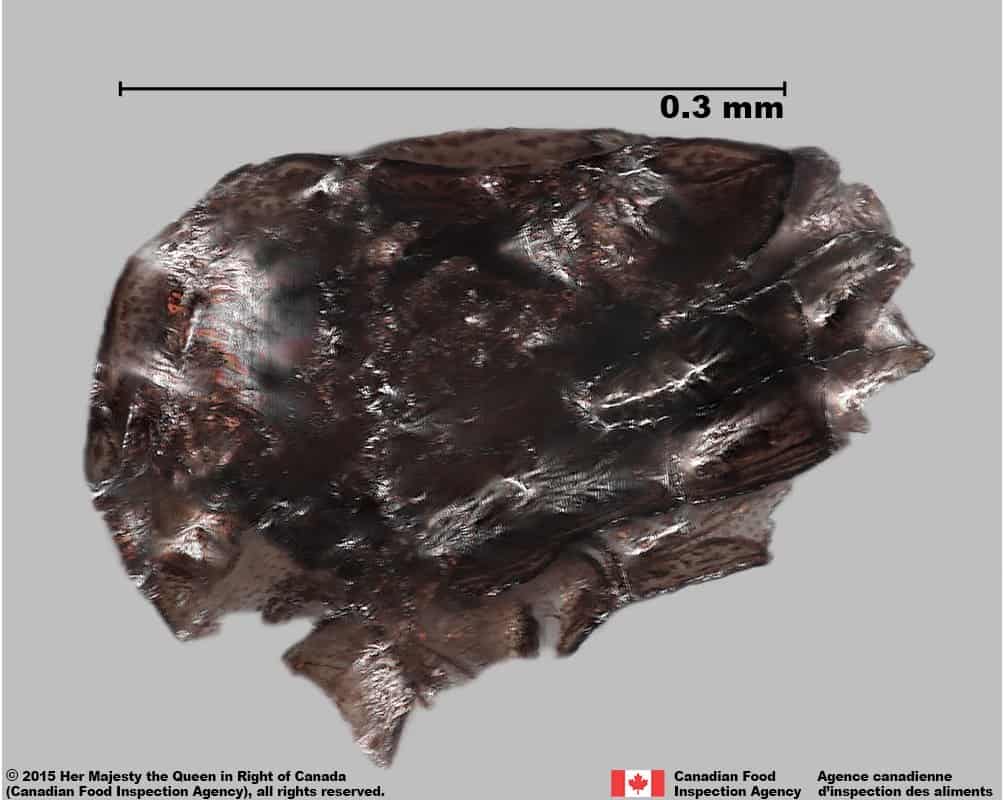
Orobanche and Phelipanche
Orobanchaceae
Orobanche minor seed
MAIN SPECIES
ESPÈCES PRINCIPALES
Orobanche and Phelipanche
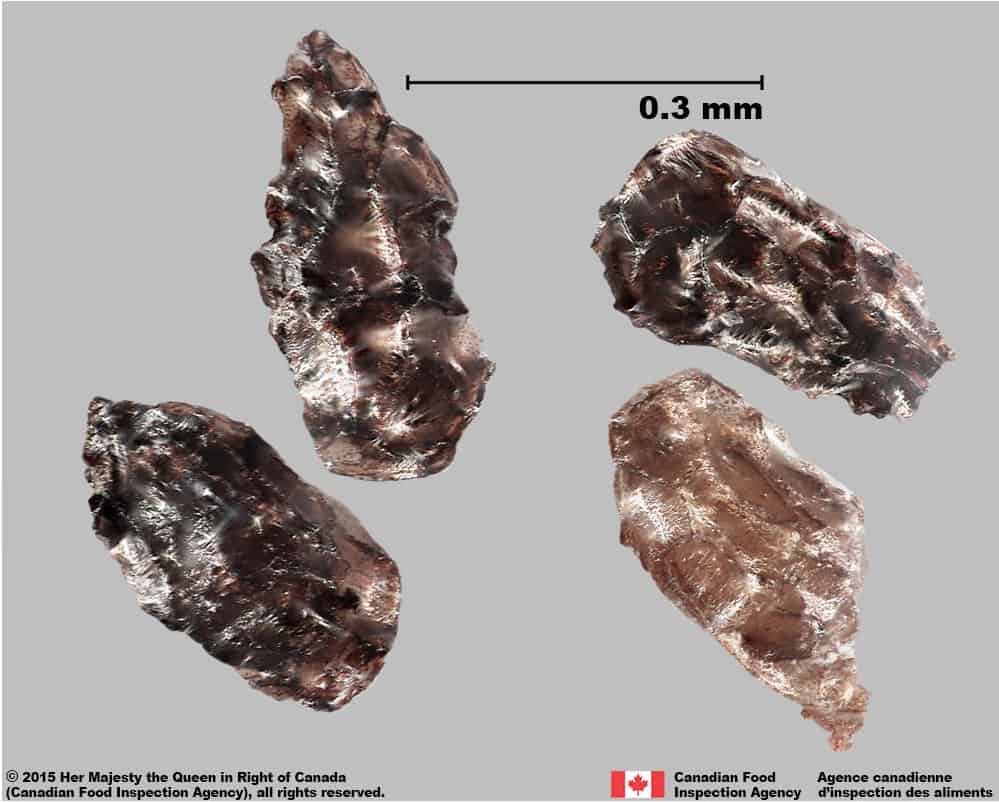
Orobanche and Phelipanche
Orobanchaceae
Orobanche minor seeds
MAIN SPECIES
ESPÈCES PRINCIPALES
Orobanche and Phelipanche
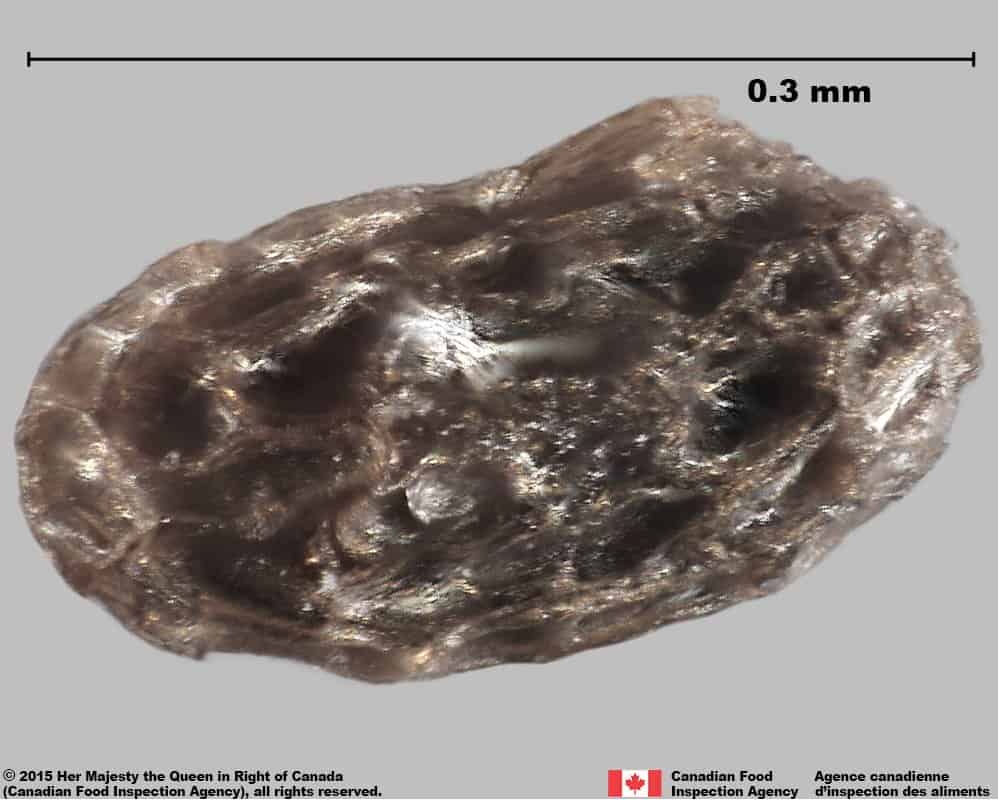
Orobanche and Phelipanche
Orobanchaceae
Orobanche uniflora seed
MAIN SPECIES
ESPÈCES PRINCIPALES
Orobanche and Phelipanche
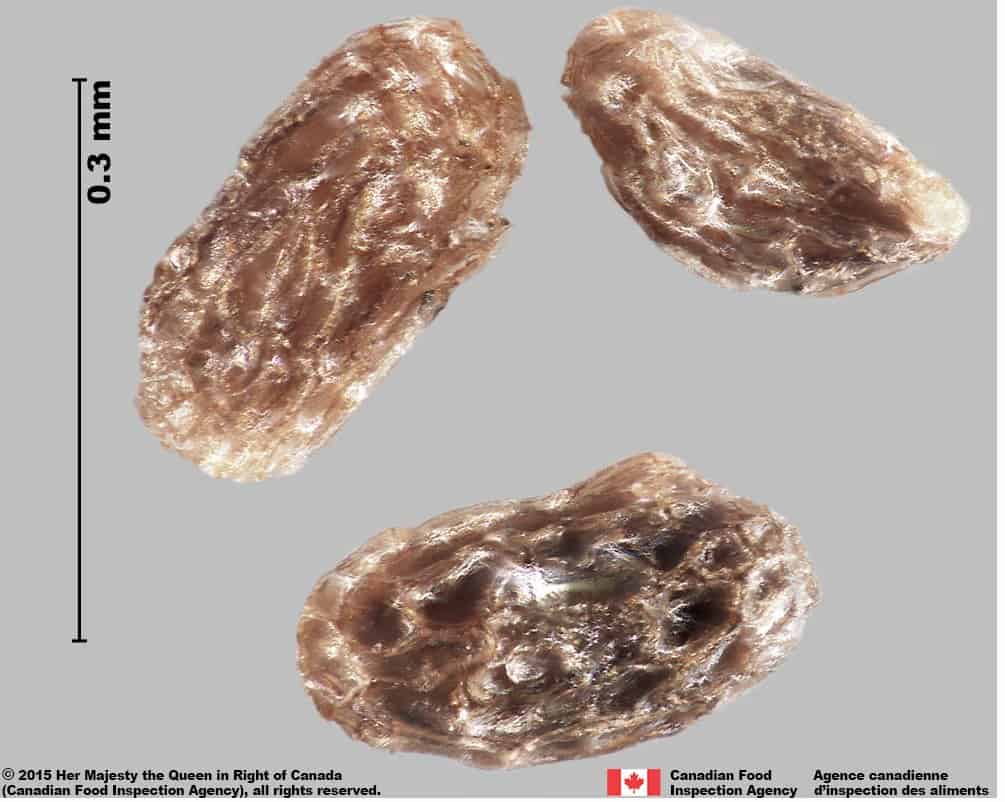
Orobanche and Phelipanche
Orobanchaceae
Orobanche uniflora seeds
MAIN SPECIES
ESPÈCES PRINCIPALES
Orobanche and Phelipanche
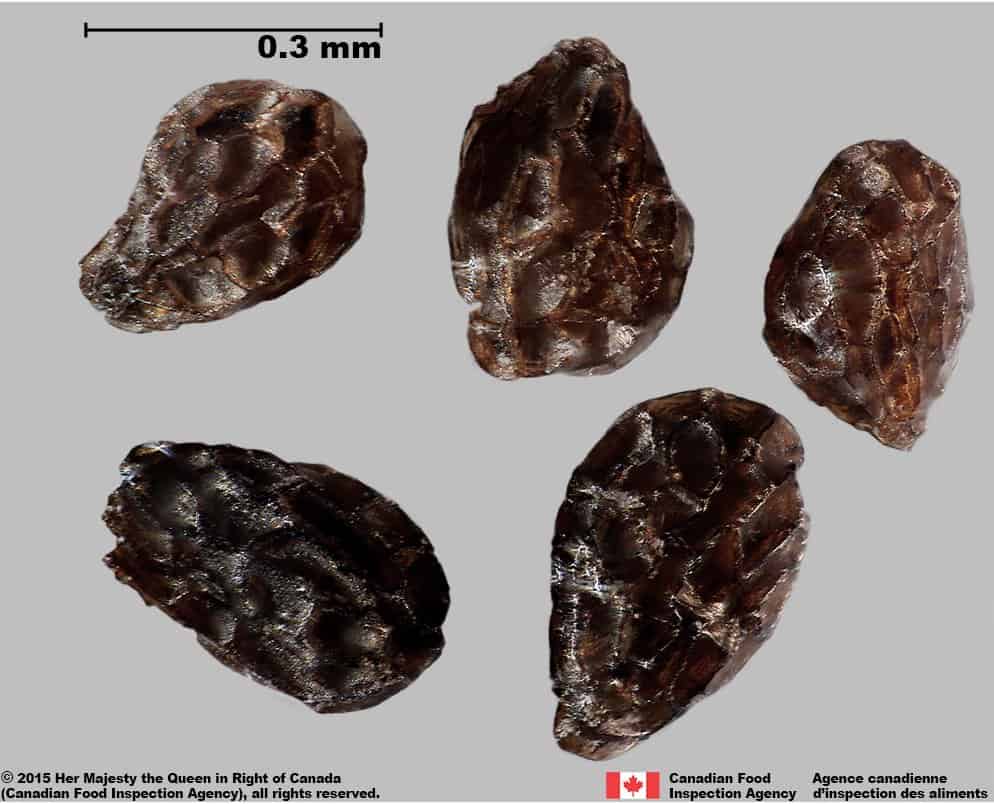
Orobanche and Phelipanche
Orobanchaceae
Phelipanche ramosa seeds
MAIN SPECIES
ESPÈCES PRINCIPALES
Orobanche and Phelipanche
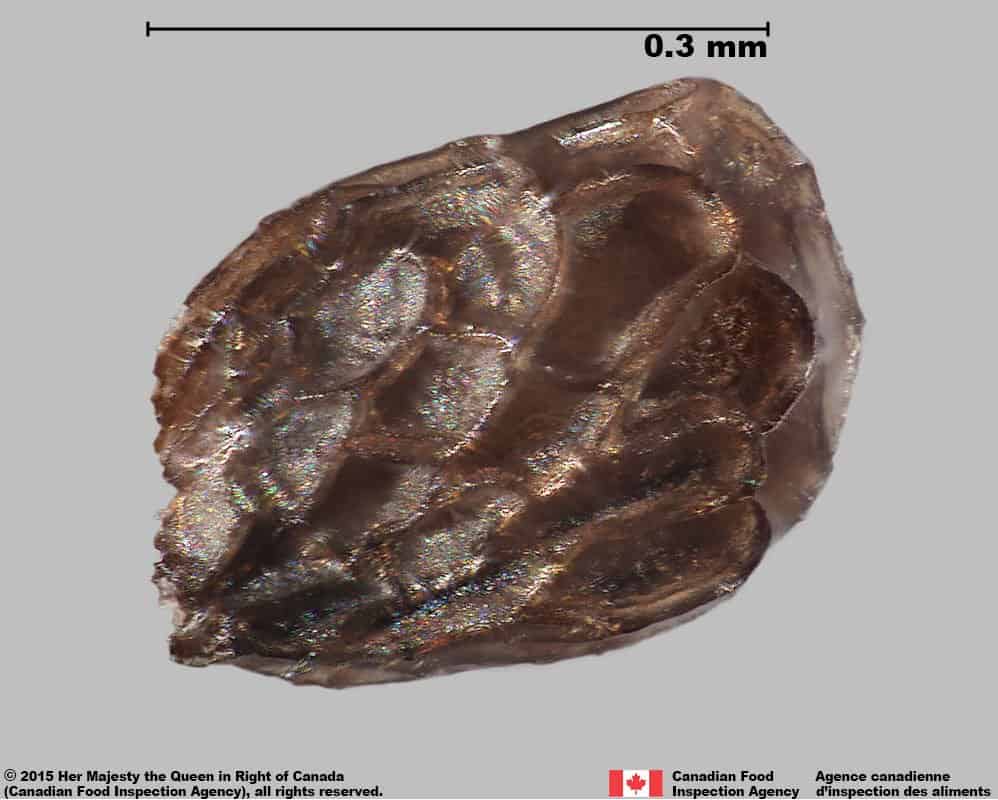
Orobanche and Phelipanche
Orobanchaceae
Phelipanche ramosa seed
SIMILAR SPECIES
ESPÈCES SEMBLABLES
Striga asiatica

Striga asiatica
Orobanchaceae
Striga asiatica seeds
SIMILAR SPECIES
ESPÈCES SEMBLABLES
Striga asiatica
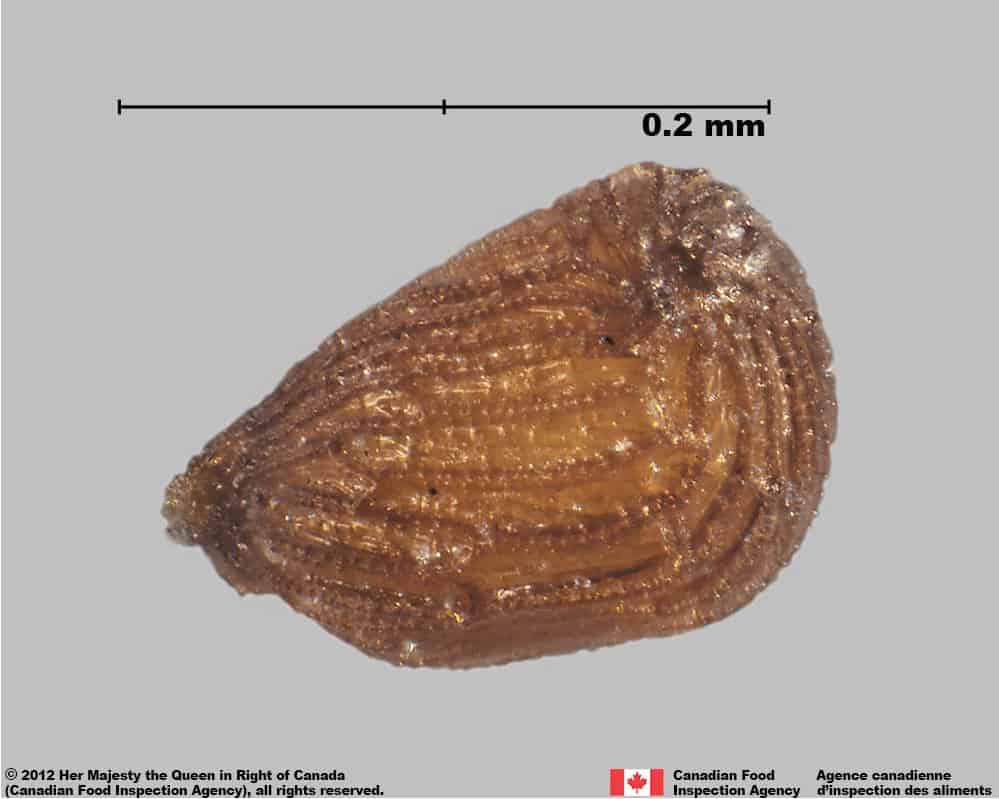
Striga asiatica
Orobanchaceae
Striga asiatica seed
Need ID Help?
Besoin d’aide pour l’identification?
Reference(s)
Référence(s)
Global Biodiversity Information Facility (GBIF) Secretariat. 2022. https://doi.org/10.15468/39omei Accessed via https://www.gbif.org/species/3173259 Accessed December 29, 2022.
Holm, L., Doll, J., Holm, E., Pancho, J. and Herberger, J. 1997. World Weeds: Natural Histories and Distribution. John Wiley & Sons, Inc., New York, NY.
Musselman, L. J. 1980. The biology of Striga, Orobanche, and other root-parasitic weeds. Annual Review of Phytopathology 18: 463-489.
Parker, C. and Riches, C. R. 1993. Parasitic Weeds of the World: Biology and Control. CAB International, Kettering, Northants, UK.
Schneeweiss, G. M. 2013. Phylogenetic relationships and evolutionary trends in Orobanchaceae. Pages 243–265 in D. M. Joel, J. Gressel and L. J. Mussleman (eds.), Parasitic Orobanchaceae. Springer, Berlin.
Schneider, A. C. 2016. Resurrection of the genus Aphyllon for New World broomrapes (Orobanche s.l., Orobanchaceae). PhytoKeys 75: 107-118.
U.S. Department of Agriculture-Natural Resources Conservation Service (USDA-NRCS). 2022. The PLANTS Database. National Plant Data Team, Greensboro, NC USA. http://plants.usda.gov Accessed December 29, 2022.



